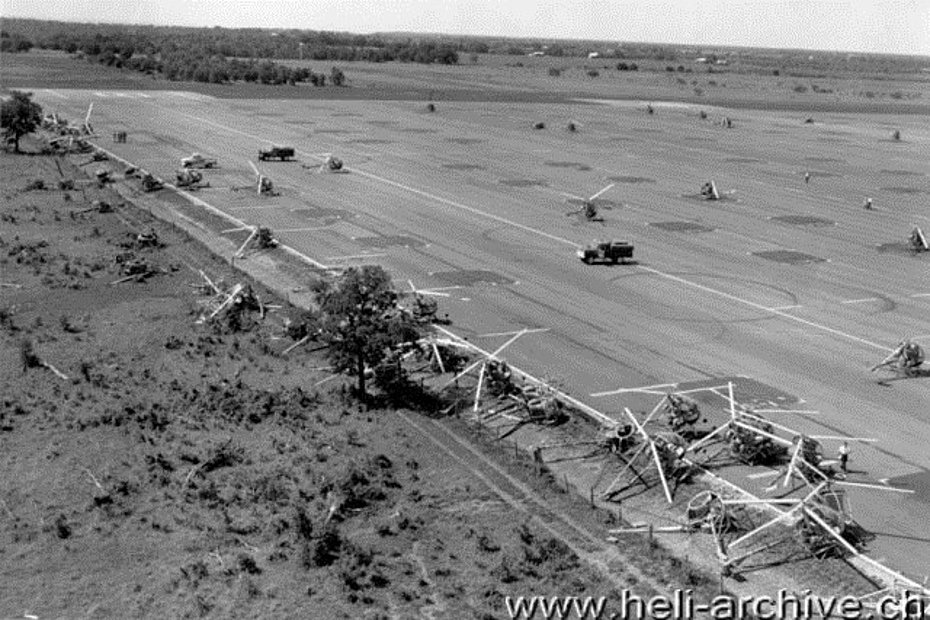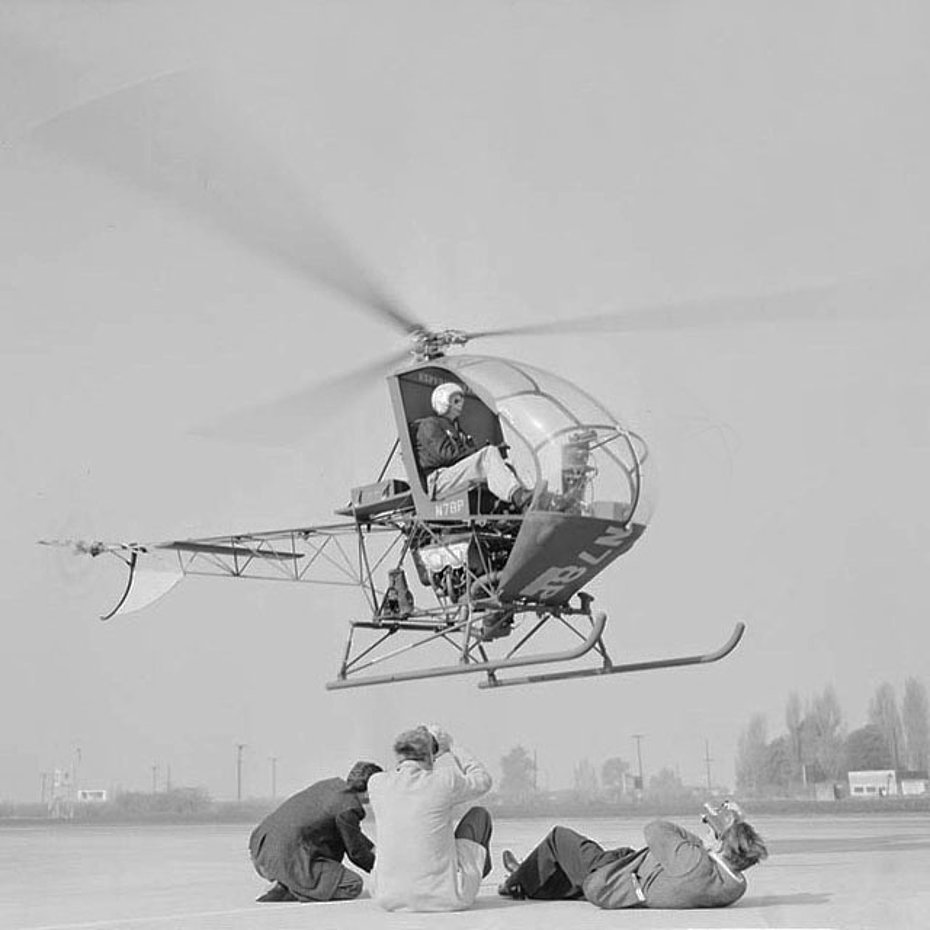
Hughes 269A - History and technical description
During the 1950s numerous engineers and builders (especially in the United States), probably inspired by the success of the early helicopters, were convinced that these would soon replace cars. Encouraged by this perceived, but unreal market, they designed and built a long list of one or two-seater to satisfy the hoped demand from private buyers. The majority of these small companies were however forced to close their activities, most of the time because they were bankrupt.
To avoid the premature end of its new kind of activity the Hughes Tool Company, based in Culver City (California) and owned by the famous American billionaire Howard Hughes, used a more cautious approach.
The society started its rotary-wing activities in 1948 when it took over the Kellett Aircraft Company which was in serious financial difficulties. The latter was developing the giant XH-17 Flying Crane, a helicopter with a payload of 5 tons.
In 1954 the Aircraft Division of Hughes commissioned a market survey to the Stanford Research Institute to precisely learn the needs of the civil aviation market. The survey indicated that a two-seater machine would in fact perform 80% of the tasks for which business and utility helicopters were being used. Civil operators were looking for a low cost, lightweight two-seater helicopter, simple, rugged and easy to maintain. Based on this information Hughes moved rapidly ahead with the development of a project known as the Model 269, described by its engineers as “radical in its simplicity and economy”. The engineering works started in September 1955 under the guidance of the chief-project Fred C. Strible. The first prototype registered N78P made its first test flight in Culver City piloted by Gale J. Moore on October 2, 1956.
Anything but attractive in its initial version, the helicopter had a fully-glazed cabin, an open framework rear boom and a skid landing gear. The three-blade articulated main rotor was identical to the one fitted to the tandem rotor helicopter Mc Culloch MC-4 also developed in Culver City by Drago K. “Gish” Jovanovich. Hughes had in fact bought the rotor patent from this engineer. The Model 269 was powered by a 134/180 kW/hp Lycoming O-360 engine.
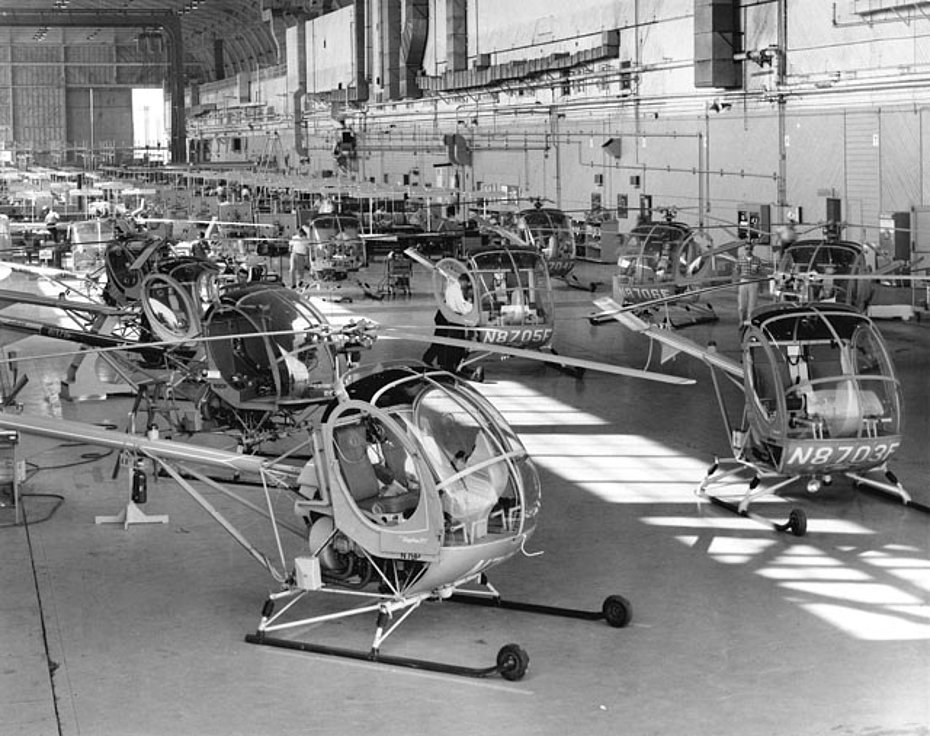
After a series of test flights the first prototype was restyled. The truss-work tail boom was replaced with a tubular and the cabin cleaned up and strengthened. The horizontal stabilizer was also removed from its mid-boom position and replaced with a new small fin placed on the starboard side of the boom directly opposite the tail rotor.
In 1957 Hughes proposed its new Model 269 to the US Army as alternative to replace the OH-13 Sioux (Bell 47) and OH-23 Raven (Hiller UH-12). The Army accepted the delivery of five pre-series units designated YHO-2 HU. These helicopters were tested (along with the SO 1221 Djinn designated YHO-1 DJ, and the Brantly B-2 designated YHO-3 BR) between 1957 and 1958 by the US Army pilots at Fort Rucker (Alabama) and at Edwards Air Force Base (California).
At the conclusion of those tests the YHO-2 HU achieved the best results of the trio. Despite this brilliant result the US Army did not immediately adopt this model. It was in fact judged to be too small to replace its famous predecessors and consequently it was eventually turned down. This fortunately did not precluded a brilliant military career. In fact by 1964 this helicopter (civil designation Model 269A-1) with minimal structural changes became the basic trainer helicopter of the US Army. It was purchased in 792 units and designated by the military as TH-55A Osage in honour of the homonym native American tribe.
Suggestions by the military pilots to improve the aircraft characteristics were carefully listened by Hughes engineering staff. Their efforts were rewarded on April 9, 1959 when the FAA issued to the American manufacturer the Type certificate 4H12 for civil use. In July 1960 the firm took the important decision to produce the Model 269A (also known as the Model 200) for the civil market. This initiative was taken after the Stanford Research Institute revealed that the civil operators would invest 2.2 billion dollars in the coming ten years. Without wasting time the company invested the necessary resources to start mass production of the new two-seater.
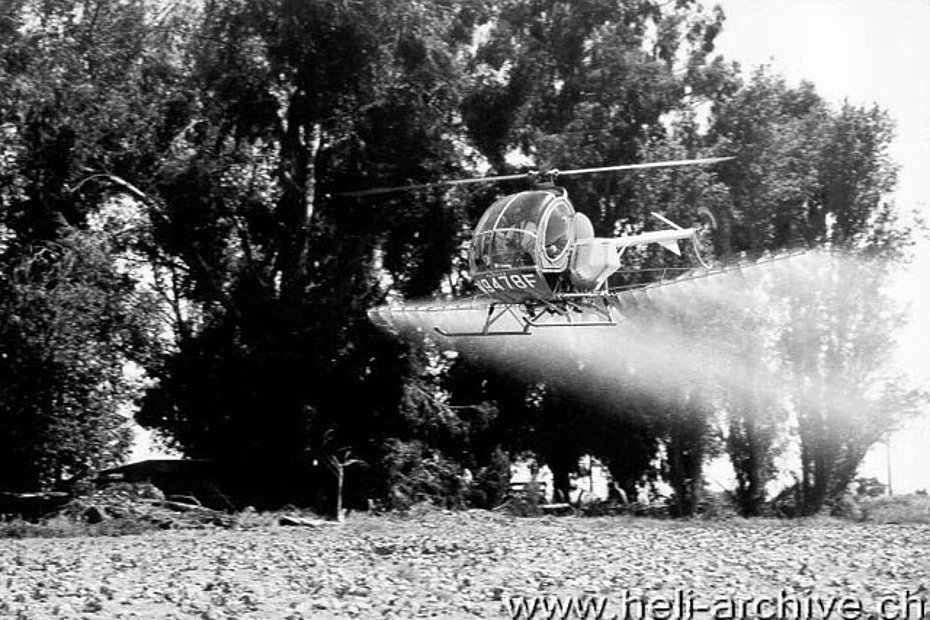
The reduced price of the Model 269A “Utility” (which was of 22'500 $ - about 112'000 Sfr.) was one of the reasons of its rapid expansion. Sales grew rapidly after the Aircraft Division of Hughes established an international dealer net. The first deliveries to civil operators occurred on October 25, 1961. The following year Hughes produced one helicopter per working day. This production rate was further increased to satisfy peak customer demand. In the meantime the versatility of the helicopter was extended with a series of practical equipments such as for example the agricultural kit introduced in April 1962.
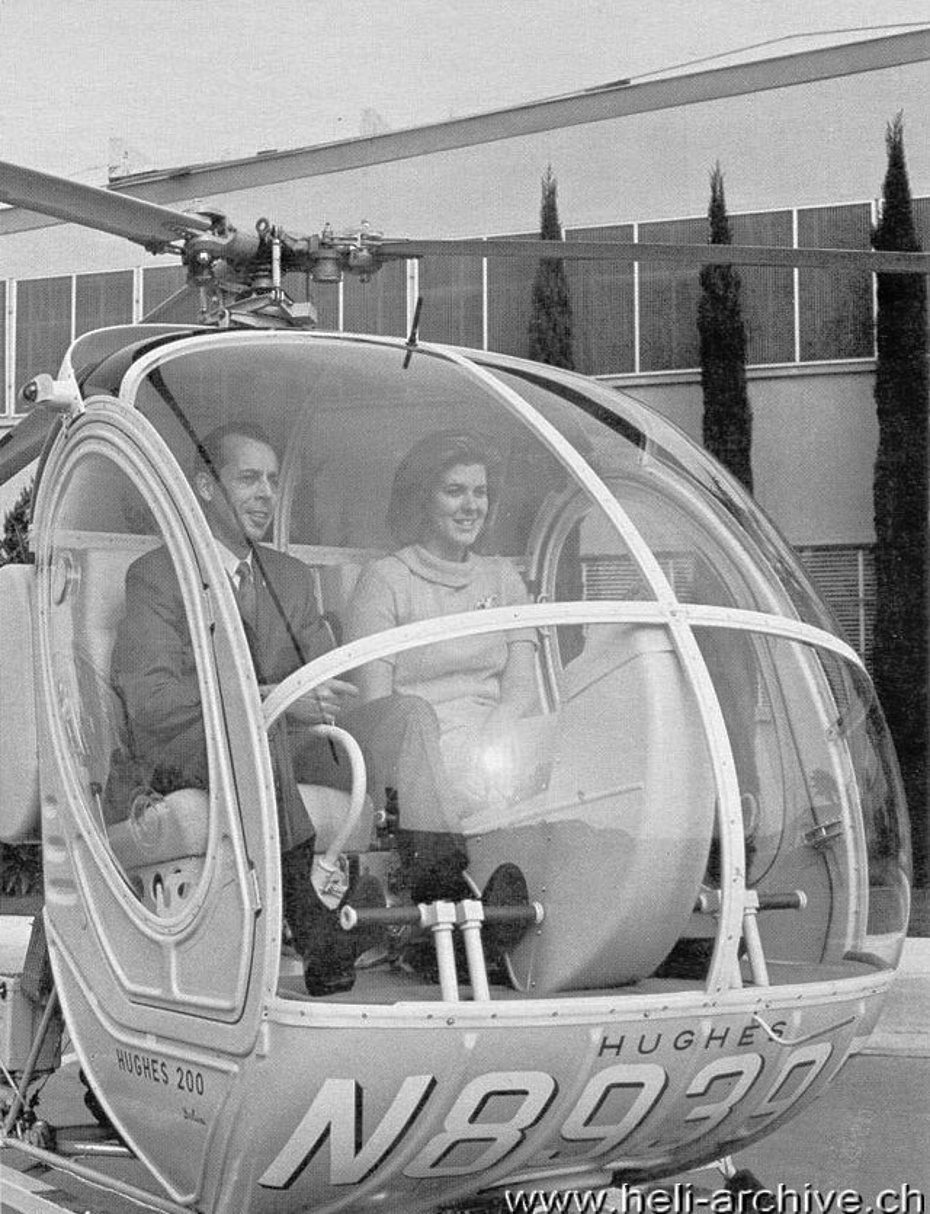
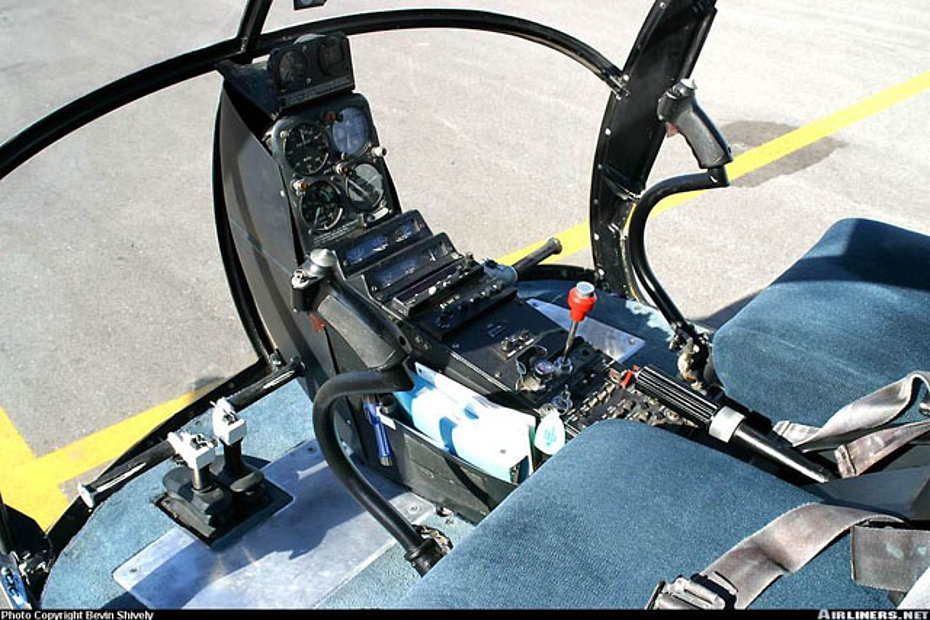
The brilliant career of the Hughes 269A is confirmed by the fact that today, after more than fifty years following its first flight, its the direct successors such as the S-300C and the S-300CBi are still being produced in series!
Civil applications
The Hughes 269A was mainly used for the following tasks: school, business and private flights, photographic and observation missions. It could also be fitted with a special spray system for agricultural applications. Several (american) cities used this two-seater in law-enforcement roles. In this function as an “eye in the sky” it was used to patrol designated areas and support the police units on the ground.
Nowadays the Hughes 269A still flying are mostly used by private users. However there are some aviation schools which are still offering training courses on this historical helicopter.
Technical description*
The Hughes 269A is a lightweight two-seater helicopter of standard configuration. The occupants seat side-by-side (the pilot sits in the right seat). The main rotor has three fully articulated blades, and the two-bladed tail rotor is of the teetering type. Its exterior aspect may not appear particularly attractive. Design emphasis is on simplicity in order to keep operating costs to a minimum.
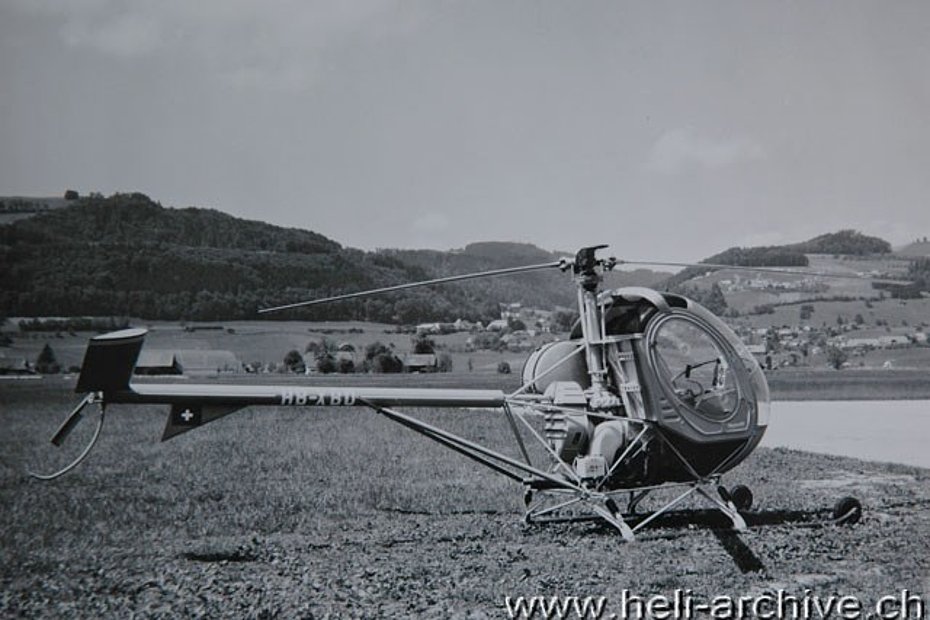
Most of the mechanical elements are exposed and easily replaced in case of necessity. The Model 269A was sold with various options of the four-cylinder horizontally opposed Lycoming O-360 engine. At the beginning it was sold with the Lycoming O-360-C2D producing a maximum take-off power of 134/180 kW/cv at 2'900 rpm 26” psi. The engine is mounted in a horizontal configuration similar to an aeroplane and is connected to the transmission by means of eight belts. This simple solution offers some important advantages such as, for example, the reduction of vibration levels and the simplicity of construction. Following engine warm up the rotor is engaged manually by means of a hand lever located on the right side of the pilot seat. The fuel tank has a capacity of 95.4 litres (25 USG) and is located behind the passenger seat. On the opposite side there is a small baggage rack.
Major items (such as the 12V 24A battery) are arranged around the cabin to give minimum center of gravity travel. The totally enclosed Plexiglas cabin is quite comfortable and permits excellent all-around visibility. If necessary the two doors can be easily removed. Between the seats there is a console with the engine and electric instruments as well as the radio. The essential flight instruments are located frontally in a low profile panel. The flight controls are directly linked to the swash-plate and are not hydraulically boosted. Trim and friction provide an excellent in-flight stability as well as ease of control. In the “Deluxe” version the cyclic control features an electric trim actuator. The custom style seats feature two integrated storage compartments. The top section may be used for small articles such as for example maps, log books, etc. while the fold out bottom sections are large enough for a small briefcase. The basic fuselage structure is made of welded steel tubes while the tail rotor is mounted on a one-piece small-diameter aluminium tube sustained by an A frame. The tail rotor shaft is mounted inside the tube. A small fin mounted on the starboard side of the boom directly opposite the tail rotor with about 30 degrees dihedral acts as a stabilizer surface. The dihedral eliminates sudden changes in pitch trim during transition from hover to forward flight. To improve the longitudinal stability the aircraft is fitted with a small triangular vertical stabilizer. The skid landing gear features four oleo-pneumatic shock absorbers which permit soft landings on flat or uneven terrain. The two small wheels fixed during the flight on top of the skids can be quickly moved close to the center of gravity. Ground handling can be easily accomplished by one or two people.
After the 269A “Utility” Hughes put into production the “Deluxe” version (also known as Hughes 200 Deluxe). This differed from the first with a series of special features which included: a deluxe interior upholstery, fuel injected Lycoming HIO-360-B1A engine, sound proofing material in the cabin, control boots, additional pilot comfort, engine side panels, new epoxy exterior paint and electric trim. The price of this special version in 1965 was 26’500 $ while in the same year the price of the Utility version was 24’875 $. Following the A model Hughes successively introduced the 269A-1 (almost identical) and then the three-seater 269B, commonly known as the Model 300.
Of this and other versions, such as for example the 269C, I shall compile a separate report.
<h2>Performances*</h2>
In standard atmospheric conditions, at its maximum take-off weight of 703 kg (1'550 lbs), the helicopter has a cruising speed of 136 km/h, while the never exceed speed at sea level is 139 km/h. Above an altitude of 610 m/asl the speed must be reduced by 1.85 km/h each 305 m. Its service ceiling is about 3'505 meters. In standard day conditions, with a take-off weight of 703 kg and a speed of 68 km/h the initial rate of climb is about 442 m/min. In the same flying conditions the helicopter hovers in ground effect at about 1’920 meters, or 1'220 meters out of ground effect. With an average hourly fuel consumption of 30-35 litres, its range is about 320 km, corresponding to about 3h of flight endurance.
<h2>Rotor and engine limitations</h2>
In flight the rotor rpm must be kept between 400 and 530 rpm while the engine operating speed has to be kept between 2'700 and 2'900 rpm. Max permissible cylinder head temperature is 260°C.
Dimensions and weights
The main rotor of the Hughes 269A has a diameter of 7.62 m (disc rotor area 45 m2), while its tail rotor has a diameter of 1.01 m (rotor disc area 0.8 m2). The fuselage has a length of 6.78 m. The 2.41 m rotor height permits entering or leaving with the rotor turning. The landing gear track is 2.0 m while the cabin is 1.29 m wide. The standard empty weight of the aircraft is about 413 kg, while its MTOW is 703 kg (1'550 lbs). Allowing for a standard pilot weight (77 kg) and with a fuel and oil reserve for one hour of flight (28 kg) the helicopter has a payload of about 185 kg
Autorotation
To correctly execute an autorotation (simulating for example an engine failure during a cruise flight above 150 meters of altitude) it is necessary to immediately push down the collective pitch lever and correct the yaw with the right foot pedal. Thereafter it is necessary to establish a steady glide at 96 km/h speed. In normal flying conditions the rate of descent is about 480 m/min. At an altitude of about 15 meters the pilot must begin to steadily apply back cyclic stick to decrease forward speed. As ground approaches back cyclic stick and collective should be used to decrease forward and vertical velocity. Ground contact should be established with level attitude.
Optional equipment
The versatility of the Hughes 269A was further increased with a series of accessories. By April 1962 the firm proposed an agricultural kit developed by the Agricultural Aviation Engineering Co. The kit included two tanks with a total capacity of 265 litres and two aluminium bars with nozzles for an application width of 11 meters. This equipment weighting about 43 kg could be removed within 15 minutes. Moreover the accessories list also included radio, a 72 litres auxiliary fuel tank, co-pilot controls, heater, night flying kit, external basket, clock, wheels, etc.
The Hughes 269A in Switzerland
Two Hughes 269A were registered in Switzerland. The first was HB-XBD (s/n 43-0190 b/y 1963) registered on August 8, 1963. The aircraft was delivered by plane from the Unites States to Germany where it arrived on May 13, 1963. It was then assembled by the technicians of Röder Präzision in Egelsbach/Germany for the Inter Aircraft AG in Basel, owner of the helicopter. On June 26, the helicopter flew to Berne where it was examined by the inspectors of the Federal Office of Civil Aviation. However in the period during which HB-XBD was registered in Switzerland it was mainly based at the airport of Mainz/Germany because its owner leased it to Blendax Werke, the homonym toothpaste producer.
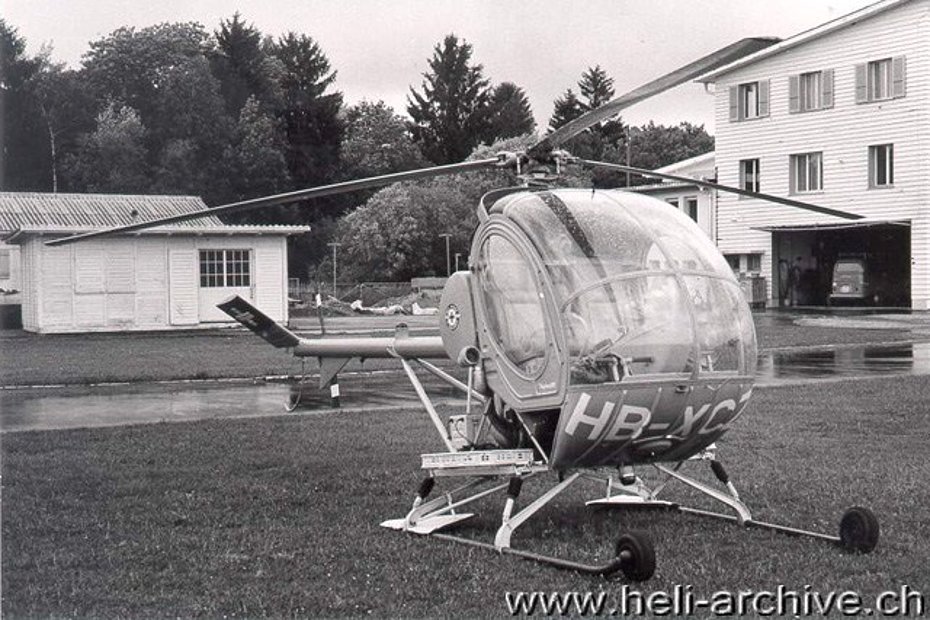
The two-seater was used to transport personnel and probably to promote the Blendax products. The Hughes 269A HB-XBD was cancelled from the Swiss aircraft register on the April 6, 1965 and then registered in Germany as D-HESM.
The second Hughes 269A (s/n 83-0272 b/y 1963) was imported to Switzerland from the United States (ex N9995F) by Peter Rutschmann, a medical doctor and active member of the Swiss Air Rescue. It received the Swiss registration HB-XCZ on September 22, 1969.
On June 28, 1972 Rutschmann sold the aircraft to a company named Baloo SA. The helicopter was temporarily based in Ticino in the hangar of Eliticino because the director of Baloo started there a helicopter training course.
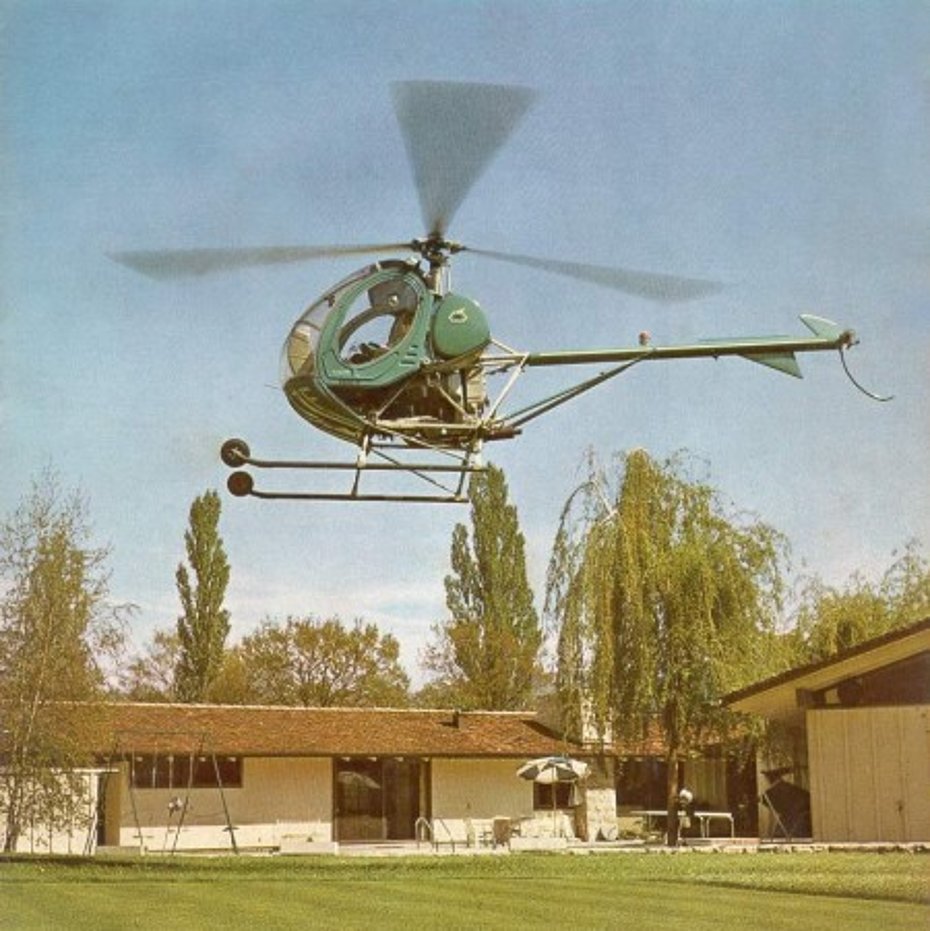
On May 1, 1973 during a private flight the aircraft was seriously damaged in Zittenbuch/ZG. However it was repaired and then sold to Denmark where it was registered OY-HBI.
On October 8, 1974 HB-XCZ was cancelled from the Swiss aircraft register.
Initially the Hughes 269A (and its successors) was marketed in Switzerland by the Rotorcraft SA based in Geneva. This company was managed by the American entrepreneur William (Bill) Powell Lear Jr. (builder of the famous Learjet). To promote the sale of the two-seater the company operated a Hughes 269A registered N8807F as a demonstrator (which was then sold in Italy where it was registered I-FVAM).
Sometimes the flight demonstrations were done by Bill Lear personally, who also used the helicopter for his private flights.
Occasionally he used it to fly from the airport of Geneva to the village of Onex/GE where he had his private residence. This helicopter was also often used for demonstration flights by Willi Meier, probably the first Swiss pilot to fly with this model.
Delivered in Switzerland the Hughes 269A “Utility” was sold by the Rotorcraft company for about 112'400.- Sfr.
In the predawn hours of April 13, 1967 a heavy wind storm, probably a tornado, struck the Downwind Heliport damaging 179 TH-55 (the military counterpart of the Hughes 29A). The degree of damage varied from minor to major. Forty-nine were seriously damaged. A production line was established at Hughes to repair these aircraft. The helicopter were stripped to the individual components then inspected or rejected airframe was placed in an alignment jig and rebuilt to a like new condition. The repair of the 179 damaged helicopter was completed in 50 calendar days.
In the civil market the Brantly B-2 was a direct competitor to the Hughes 269A.
* referred to the first early production Hughes 269A


